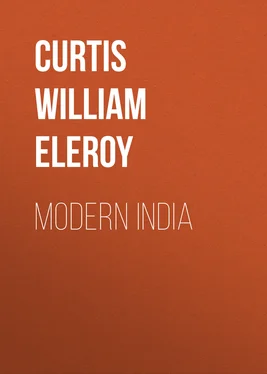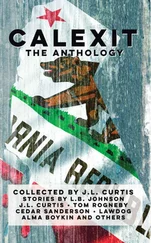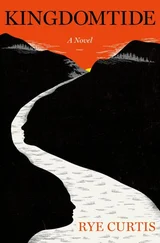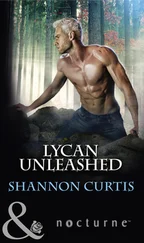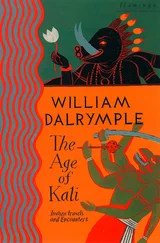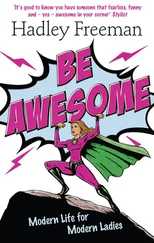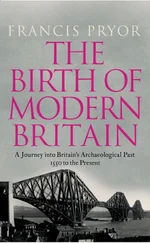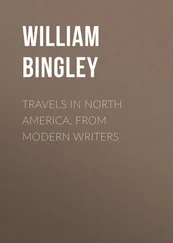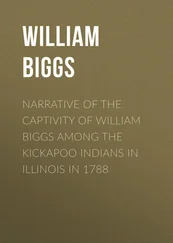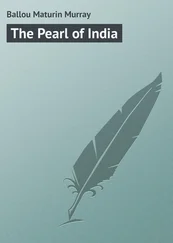William Curtis - Modern India
Здесь есть возможность читать онлайн «William Curtis - Modern India» — ознакомительный отрывок электронной книги совершенно бесплатно, а после прочтения отрывка купить полную версию. В некоторых случаях можно слушать аудио, скачать через торрент в формате fb2 и присутствует краткое содержание. Жанр: Путешествия и география, История, foreign_edu, foreign_antique, foreign_prose, на английском языке. Описание произведения, (предисловие) а так же отзывы посетителей доступны на портале библиотеки ЛибКат.
- Название:Modern India
- Автор:
- Жанр:
- Год:неизвестен
- ISBN:нет данных
- Рейтинг книги:4 / 5. Голосов: 1
-
Избранное:Добавить в избранное
- Отзывы:
-
Ваша оценка:
- 80
- 1
- 2
- 3
- 4
- 5
Modern India: краткое содержание, описание и аннотация
Предлагаем к чтению аннотацию, описание, краткое содержание или предисловие (зависит от того, что написал сам автор книги «Modern India»). Если вы не нашли необходимую информацию о книге — напишите в комментариях, мы постараемся отыскать её.
Modern India — читать онлайн ознакомительный отрывок
Ниже представлен текст книги, разбитый по страницам. Система сохранения места последней прочитанной страницы, позволяет с удобством читать онлайн бесплатно книгу «Modern India», без необходимости каждый раз заново искать на чём Вы остановились. Поставьте закладку, и сможете в любой момент перейти на страницу, на которой закончили чтение.
Интервал:
Закладка:
The second thing that impresses you is the amount of glistening silver the working women wear upon their naked limbs. To drop into poetry, like Silas Wegg, they wear rings in their noses and rings on their toeses, and bands of silver wherever they can fasten them on their arms and legs and neck. They have bracelets, anklets, armlets, necklaces, and their noses as well as their ears are pierced for pendants. You wonder how a woman can eat, drink or sleep with a great big ornament hanging over her lips, and some of the earrings must weigh several ounces, for they fall almost to the shoulders. You will meet a dozen coolie women every block with two or three pounds of silver ornaments distributed over their persons, which represent their savings bank, for every spare rupee is invested in a ring, bracelet or a necklace, which, of course, does not pay interest, but can be disposed of for full value in case of an emergency. The workmanship is rude, but the designs are often pretty, and a collection of the silver ornaments worn by Hindu women would make an interesting exhibit for a museum. They are often a burden to them, particularly in hot weather, when they chafe and burn the flesh, and our Bombay friends tell us that in the summer the fountain basins, the hydrants and every other place where water can be found will be surrounded by women bathing the spots where the silver ornaments have seared the skin and cooling the metal, which is often so hot as to burn the fingers.
Another feature of Bombay life which immediately seizes the attention is the gay colors worn by everybody, which makes the streets look like animated rainbows or the kaleidoscopes that you can buy at the 10-cent stores. Orange and scarlet predominate, but yellow, pink, purple, green, blue and every other tint that was ever invented appears in the robes of the Hindus you meet upon the street. A dignified old gentleman will cross your path with a pink turban on his head and a green scarf wound around his shoulders. The next man you meet may have a pair of scarlet stockings, a purple robe and a tunic of wine-colored velvet embroidered in gold. There seems to be no rule or regulation about the use of colors and no set fashion for raiment. The only uniformity in the costume worn by the men of India is that everybody's legs are bare. Most men wear sandals; some wear shoes, but trousers are as rare as stovepipe hats. The native merchant goes to his counting-room, the banker to his desk, the clergyman discourses from a pulpit, the lawyer addresses the court, the professor expounds to his students and the coolie carries his load, all with limbs naked from the ankles to the thighs, and never more than half-concealed by a muslin divided skirt.
The race, the caste and often the province of a resident of India may be determined by his headgear. The Parsees wear tall fly-trap hats made of horse hair, with a top like a cow's foot; the Mohammedans wear the fez, and the Hindus the turban, and there are infinite varieties of turbans, both in the material used and in the manner in which they are put up. An old resident of India can usually tell where a man comes from by looking at his turban.
II
THE CITY OF BOMBAY
There are two cities in Bombay, the native city and the foreign city. The foreign city spreads out over a large area, and, although the population is only a small per cent of that of the native city, it occupies a much larger space, which is devoted to groves, gardens, lawns, and other breathing places and pleasure grounds, while, as is the custom in the Orient, the natives are packed away several hundred to the acre in tall houses, which, with over-hanging balconies and tile roofs, line the crooked and narrow streets on both sides. Behind some of these tall and narrow fronts, however, are dwellings that cover a good deal of ground, being much larger than the houses we are accustomed to, because the Hindus have larger families and they all live together. When a young man marries he brings his bride home to his father's house, unless his mother-in-law happens to be a widow, when they often take up their abode with her. But it is not common for young couples to have their own homes; hence the dwellings in the native quarters are packed with several generations of the same family, and that makes the occupants easy prey to plagues, famine and other agents of human destruction.
The Parsees love air and light, and many rich Hindus have followed the foreign colony out into the suburbs, where you find a succession of handsome villas or bungalows, as they are called, half-hidden by high walls that inclose charming gardens. Some of these bungalows are very attractive, some are even sumptuous in their appointments–veritable palaces, filled with costly furniture and ornaments–but the climate forbids the use of many of the creature comforts which American and European taste demands. The floors must be of tiles or cement and the curtains of bamboo, because hangings, carpets, rugs and upholstery furnish shelter for destructive and disagreeable insects, and the aim of everybody is to secure as much air as possible without admitting the heat.
Bombay is justly proud of her public buildings. Few cities have such a splendid array. None that I have ever visited except Vienna can show an assemblage so imposing, with such harmony and artistic uniformity combined with convenience of location, taste of arrangement and general architectural effect. There is nothing, of course, in Bombay that will compare with our Capitol or Library at Washington, and its state and municipal buildings cannot compete individually with the Parliament House in London, the Hotel de Ville de Paris or the Palace of Justice in Brussels, or many others I might name. But neither Washington nor London nor Paris nor any other European or American city possesses such a broad, shaded boulevard as Bombay, with the Indian Ocean upon one side and on the other, stretching for a mile or more, a succession of stately edifices. Vienna has the boulevard and the buildings, but lacks the water effect. It is as if all the buildings of the University of Chicago were scattered along the lake front in Chicago from the river to Twelfth street.
The Bombay buildings are a mixture of Hindu, Gothic and Saracenic architecture, blended with taste and success, and in the center, to crown the group, rises a stately clock tower of beautiful proportions. All of these buildings have been erected during the last thirty years, the most of them with public money, many by private munificence. The material is chiefly green and gray stone. Each has ample approaches from all directions, which contribute to the general effect, and is surrounded by large grounds, so that it can be seen to advantage from any point of view. Groves of full-grown trees furnish a noble background, and wide lawns stretch before and between. There is parking along the shore of the bay, then a broad drive, with two sidewalks, a track for bicycles and a soft path for equestrians, all overhung with far-stretching boughs of immense and ancient trees, which furnish a grateful shade against the sun and add to the beauty of the landscape. I do not know of any such driveway elsewhere, and it extends for several miles, starting from an extensive common or parade ground, which is given up to games and sports. Poor people are allowed to camp there in tents in hot weather, for there, if anywhere, they can keep cool, because the peninsula upon which Bombay stands is narrow at that point, and if a breeze is blowing from any direction they get it. At intervals the boulevard is intersected by small, well-kept parks with band stands, and is broken by walks, drives, beds of flowers, foliage, plants and other landscape decorations; and this in the midst of a great city.
On the inside of the boulevard, following the contour of the shore of the bay, is first, Elphinstone College, then the Secretariat, which is the headquarters of the government and contains several state apartments of noble proportions and costly decorations. The building is 443 feet long, with a tower 170 feet high. Next it are the buildings of the University of Bombay, a library with a tower 260 feet high, a convocation hall of beautiful design and perfect proportions and other buildings. Then comes the Courts of Justice; an immense structure nearly 600 feet long, with a tower 175 feet high, which resembles the Law Courts of London, and is as appropriate as it is imposing. The department of public works has the next building; then the postoffice department, the telegraph department, the state archives building and patent office in order. The town hall contains several fine rooms and important historic pictures. The mint is close to the town hall, and next beyond it are the offices of the Port Trust, which would correspond to our harbor commissioners. Then follow in order the Holy Trinity Church, the High School, St. Xavier's College, the Momey Institute, Wilson College, long rows of barracks, officers' quarters and clubs, the Sailors' Home, several hospitals, a school of art and Elphinstone High School, which is 452 by 370 feet in size and one of the most palatial educational institutions I have ever seen, the splendid group culminating in the Victoria Railway station, which is the finest in the world and almost as large as any we have in the United States.
Читать дальшеИнтервал:
Закладка:
Похожие книги на «Modern India»
Представляем Вашему вниманию похожие книги на «Modern India» списком для выбора. Мы отобрали схожую по названию и смыслу литературу в надежде предоставить читателям больше вариантов отыскать новые, интересные, ещё непрочитанные произведения.
Обсуждение, отзывы о книге «Modern India» и просто собственные мнения читателей. Оставьте ваши комментарии, напишите, что Вы думаете о произведении, его смысле или главных героях. Укажите что конкретно понравилось, а что нет, и почему Вы так считаете.
